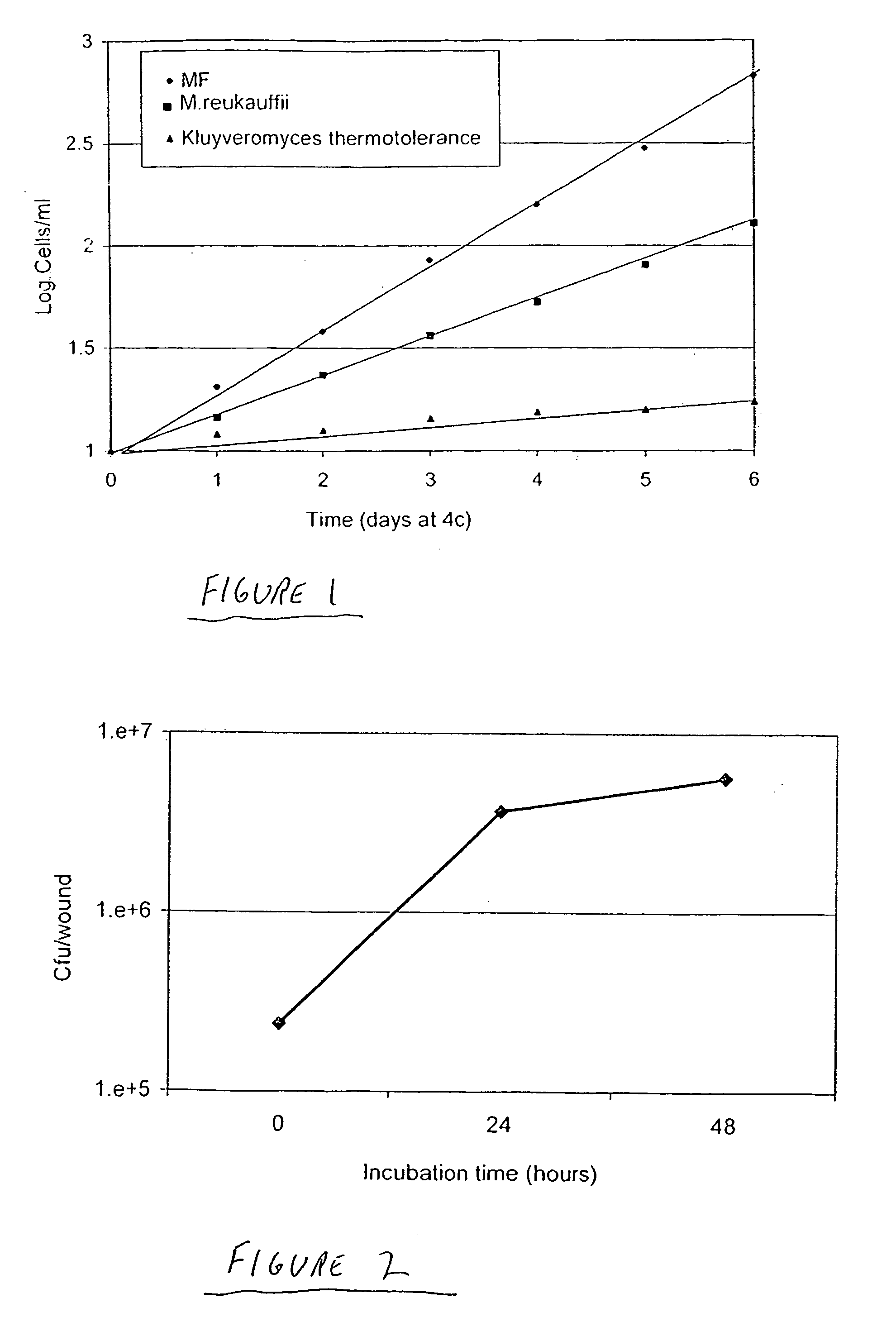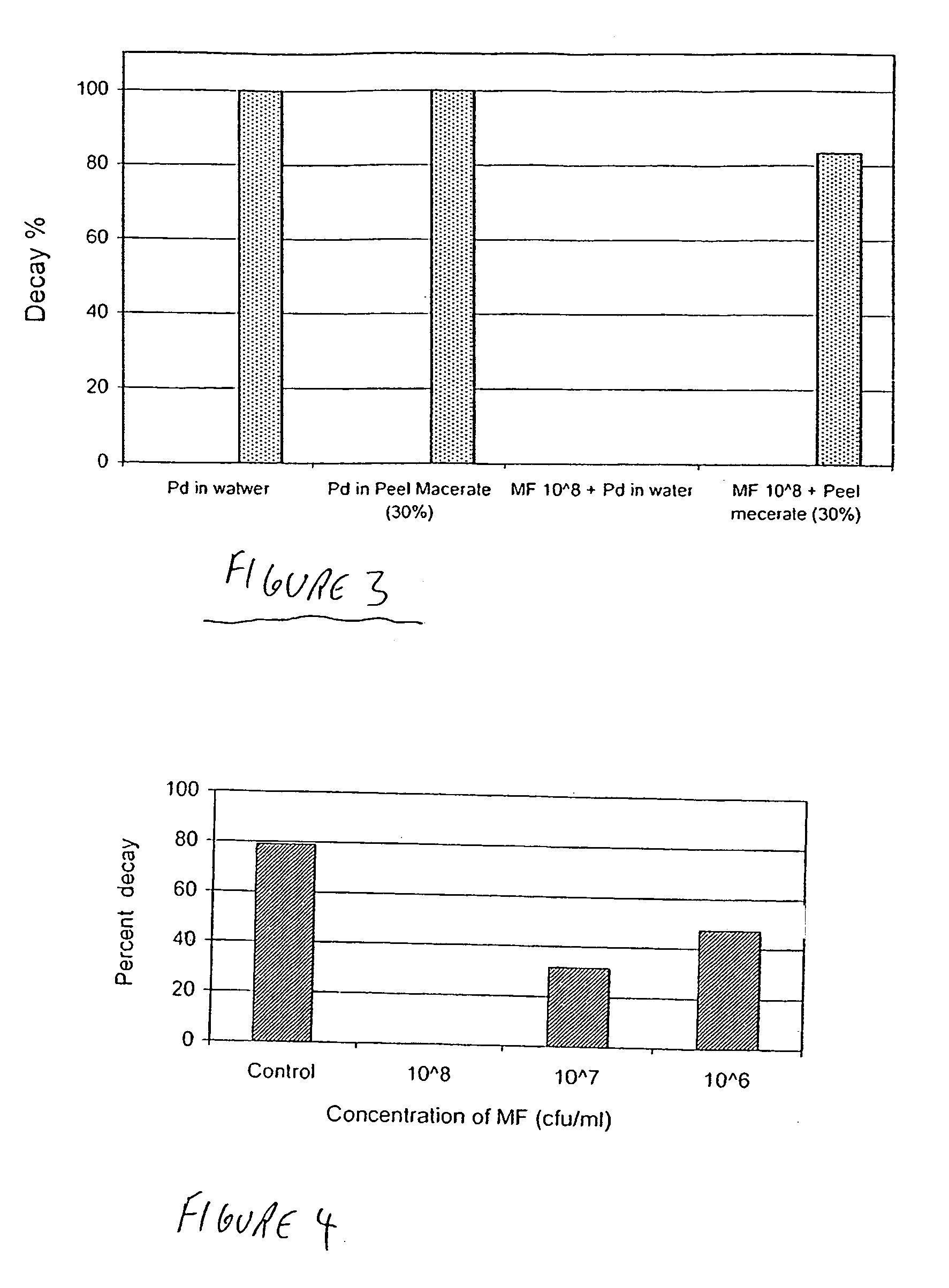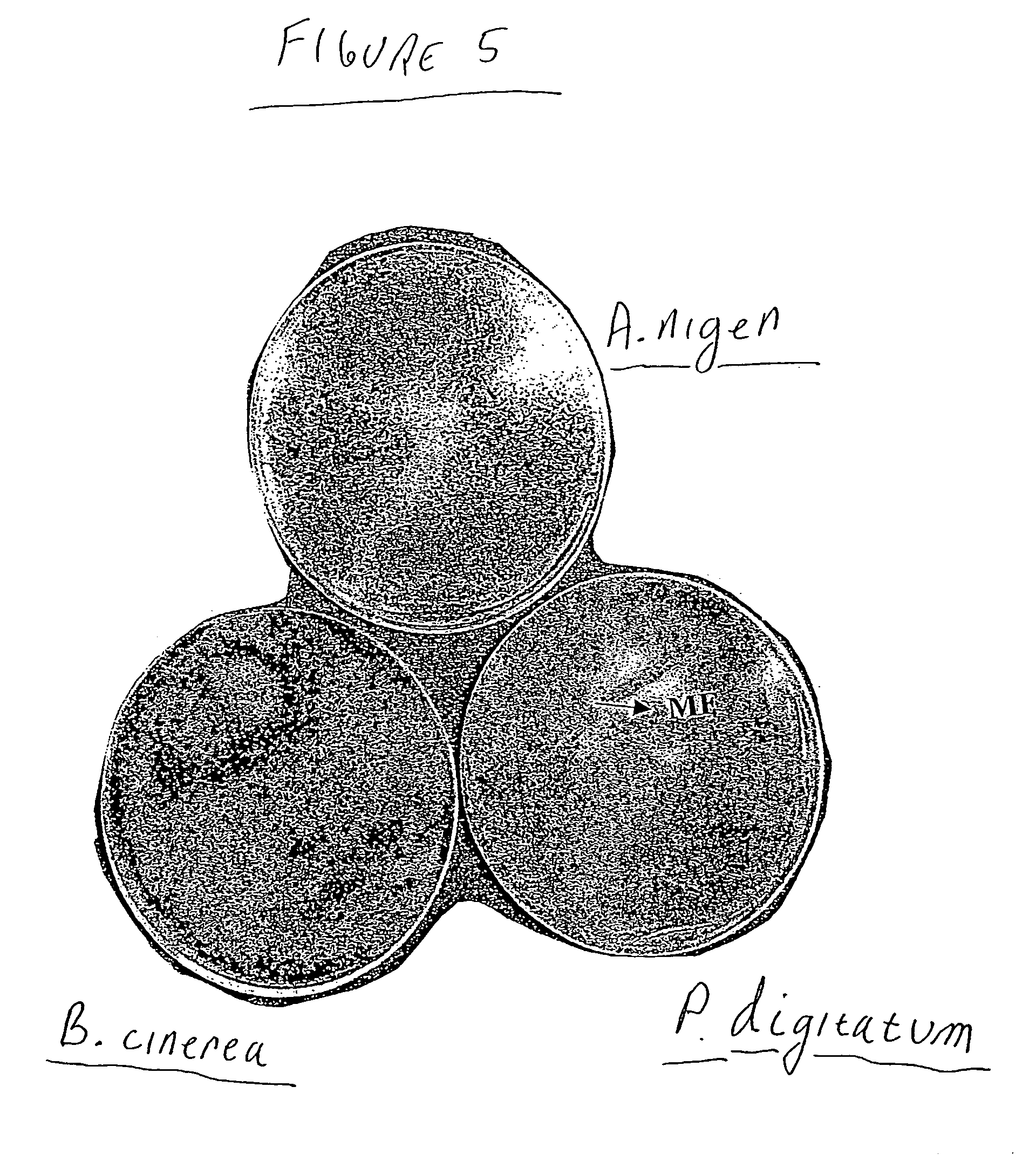Yeast Metschnikowia fructicola NRRL Y-30752 for inhibiting deleterious microorganisms on plants
a technology of metschnikowia fructicola and yeast, which is applied in the field of yeast metschnikowia fructicola, can solve the problems of increasing the decay or spoilage of produce after harvest, and the increase of global pressure to reduce the use of toxic chemicals in the food industry. , to achieve the effect of controlling spoilag
- Summary
- Abstract
- Description
- Claims
- Application Information
AI Technical Summary
Benefits of technology
Problems solved by technology
Method used
Image
Examples
example 1
Isolation of Metschnikowia fructicola
[0084]The novel yeast species Metschnikowia fructicola was isolated from the surface of grape berries (cv. Superior) grown in the central part of Israel. At various stages, individual berries were submersed in sterile distilled water in 100 ml beakers and shaken vigorously for 2 hours on rotary shaker at 120 rpm. Aliquots of 100 μl were removed from the wash liquid and plated on PDA (Potato Dextrose Agar; DIFCO Laboratories, U.S.A.) medium. Following 4–5 days of incubation, yeast colonies were picked randomly according to colony characteristics (color and morphology) and streaked individually on fresh medium to obtain biologically pure cultures. Cultures were further purified by repeated streaking on PDA. Identification and characterization of the new species was done at the Microbial Genomics and Bioprocessing center, USDA-ARS, Peoria, Ill., USA. Metschnikowia fructicola was deposited at the NRRL under the number Y-30752.
example 2
Propagation of Metschnikowia fructicola
[0085]Metschnikowia fructicola is propagated under aerobic conditions at temperatures ranging from 5° C. to 37° C. Optimal growth temperature is 20–27° C. The growth is in liquid medium (nutrient broth; Droby et al., 1989) with a neutral pH. The cell density of the yeast reaches its maximum (stationary stage) growth in 24–48 hours. For laboratory and small scale tests growth in Erlenmeyer flasks containing the medium and shaken on a rotary shaker is suitable. For large scale and commercial tests, fermentation tanks and industrial growth media are preferred. The yeast cells are harvested by centrifugation using conventional laboratory or industrial centrifuges. One ordinarily skilled in the art of fermentation culture will be able to scale up culture volumes using suitable growth media and commercially available equipment.
example 3
Laboratory Assay of Activity of Metschnikowia fructicola on Grapes and Cherry Tomato
[0086]Individual grapes or cherry tomatoes were removed from clusters. Surface disinfection was accomplished by dipping for 1 min in 1% (v / v) sodium hypochlorite (pH 11.5). Disinfected fruit was mounted on masking tape strips glued to PVC pads within an incubation box. The fruit was punctured with a pin to a depth of 2 mm and 10 μl of an antagonist (Metschnikowia fructicola or as indicated) cell suspension were pippeted onto the wound site and left to dry for 1–2 hours. Fruit was then inoculated with 10 μl of conidial suspension of an appropriate fungal pathogen (B. cinerea or as indicated). Conidial suspensions were obtained from one-week-old pathogen cultures incubated at room temperatures. Spore concentration was adjusted to 1–5×104 conidia / ml. Each treatment was applied to three replicates of 7–10 individual fruit. Following the treatment, wet filter paper was placed in the incubation boxes which...
PUM
| Property | Measurement | Unit |
|---|---|---|
| temperature | aaaaa | aaaaa |
| temperature | aaaaa | aaaaa |
| pH | aaaaa | aaaaa |
Abstract
Description
Claims
Application Information
 Login to View More
Login to View More - R&D
- Intellectual Property
- Life Sciences
- Materials
- Tech Scout
- Unparalleled Data Quality
- Higher Quality Content
- 60% Fewer Hallucinations
Browse by: Latest US Patents, China's latest patents, Technical Efficacy Thesaurus, Application Domain, Technology Topic, Popular Technical Reports.
© 2025 PatSnap. All rights reserved.Legal|Privacy policy|Modern Slavery Act Transparency Statement|Sitemap|About US| Contact US: help@patsnap.com



